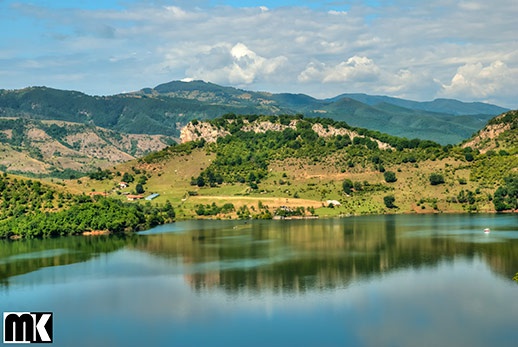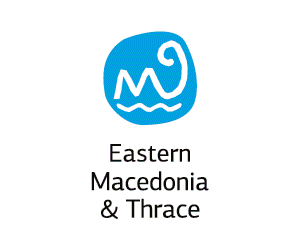Traveler's Guide
East Macedonia & Thrace
Fortress Patmos - fortified bishop over r.Borovitsa

Both rivers have been dammed by Kardzhali reservoir. The fortress is larger than the neighboring one - Krivus, and has well preserved remains of fortress walls, the foundations of a church and a tower. The castle is located on the left bank of the Borovitsa River,opposite Borovitsa cottage, which is on the right, opposite the fortress. The castle was built probably between the 9th and 14th centuries. Patmos castle was built on a peak above the place where Borovitsa River flows into the Arda River. This was the place where major roads connecting Philippopolis with Mosinopol and Adrianople merged. This fortification is bigger than the neighbouring one called Krivus. It is not as ruined as Krivus. It was used to protect the river and to give out light signals as well. One can view several neighboring fortresses from here.
Archeological excavations revealed well-preserved remains of a basilica and a tower right next to it.
To the south, at the base of the rock, there is a cave with a water spring (the castle itself had no water storage). Two galleries lead the way from the cave to the fortified area.
Two buildings stand out. One is a three-nave basilica with three apses, built on the ruins of a former, probably early Byzantine church. The first church was supposedly built in the 5th century and is associated with the mission of Nikita Remesianski that led to the imposition of Christianity on these lands. The second church is similar to the first. Each nave has a separate entrance from the west. It was built of crushed stones, fitted together with white mortar. In the third stage of the construction of the temple the three naves were separated and enclosed by walls.
The northern nave had become a crypt in which were found 23 childrens’ graves and the southern was turned into a small chapel. This might have been one of the early Christian episcopates of a Philipopol diocese.
The basement must have served as a food storehouse. The upper floors were residential, with wooden floors. This tower can be seen as a separate residential tower – a donjon or the home of a clergyman. The latest castle renovations can be dated back to 12th -13th century. In the years 1254-1255, when many Achridos fortresses previously captured by Bulgarians were regained, Emperor Theodore Laskaris sent an expedition against the fortress, led by Duke Alexei Filantropin. People from the area say that in the big battle near the fortress was killed a prominent Bulgarian military leader, whose memory is still commemorated. The Crusaders led by Geoffroy de Villehardouin passed along the Arda River at the foot of the fortress.
Address
No information available.Contact Information
No information available.





